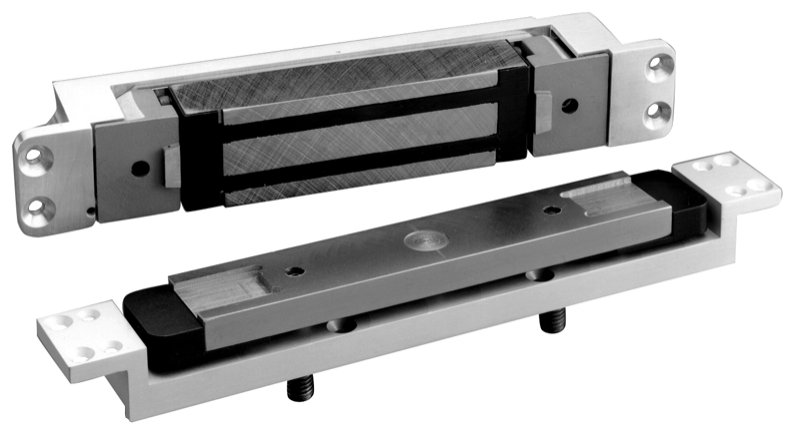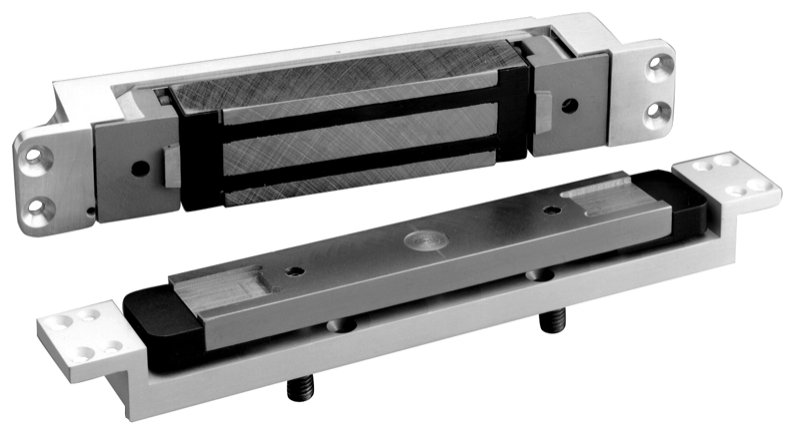Last week someone called me with a “quick question” about a double egress pair in a hospital. The hospital wanted to install shear locks on a pair of double egress doors, to use during emergency lock-downs. Unfortunately, as some of you have figured out by now, I don’t usually have a quick answer. There are actually two issues here:
1) If there’s a pair of cross-corridor double egress doors, that’s usually a clue that egress is required in both directions. Not 100% of the time, but almost. If you install an electromagnetic lock on an egress door, you also need a motion sensor and push button to unlock the door from the egress side, and the door has to unlock upon power failure and fire alarm. Since both sides of a double egress pair are usually required for egress, that means that both sides of the opening would have motion sensors and therefore, no security. In some cases, a variance may be granted by the code official, but the facility would have to go through the process of applying for one and the chances of receiving the variance aren’t great.
 2) The second problem with this application is the use of shear locks. Shear locks are one of my least favorite locking devices (which implies that I have a list of favorites, which means that I’m a total dork), and my opinion is shared by just about every security consultant I’ve ever met. A shear lock has an electromagnet concealed in the frame head, and a steel armature in the top of the door. When the door closes, if the door, frame, magnet, armature, and all the stars in the sky are aligned, the magnet energizes and pulls the steel armature up to meet it, creating the magnetic bond which locks the door. The chances of alignment a year or two after installation are about as good as the chances of receiving the variance. This jeopardizes security and requires extra maintenance, not to mention the noise of the steel armature meeting the magnet. Architects like them because they’re concealed, but they’re not reliable over time.
2) The second problem with this application is the use of shear locks. Shear locks are one of my least favorite locking devices (which implies that I have a list of favorites, which means that I’m a total dork), and my opinion is shared by just about every security consultant I’ve ever met. A shear lock has an electromagnet concealed in the frame head, and a steel armature in the top of the door. When the door closes, if the door, frame, magnet, armature, and all the stars in the sky are aligned, the magnet energizes and pulls the steel armature up to meet it, creating the magnetic bond which locks the door. The chances of alignment a year or two after installation are about as good as the chances of receiving the variance. This jeopardizes security and requires extra maintenance, not to mention the noise of the steel armature meeting the magnet. Architects like them because they’re concealed, but they’re not reliable over time.
My recommendation for this application was that they may be able to use delayed egress mag-locks or exit devices, and that direct-hold mag-locks would be preferable to concealed shear locks. Maybe not as pretty, but beauty is in the eye of the beholder, right?
You need to login or register to bookmark/favorite this content.






Looking at this from the requirements of 7.2.1.6.1 have you ever been required to define the word throughout? Some of the hospitals around do not have the entire building sprinkled some certain floors only, others you may walk through a connector and the new hallway does and the old hallway does not, and that connector door is the one they want to lock down. I have read 9.6 and 9.7 and either missed it or it is not defined, then having spoke with AHJ has received two different interpretations/requirements
I added a post about this here: http://www.idighardware.com/?p=658
I hope it answers your question.
– Lori
Lori –
i run into de pairs in hospitals all the time and often they are rated,
card reader one or both sides and automatic. I try to convince the AIA
to use metal doors, but …? I use EO-F devices, concealed if metal;
390DE and auto operators 9553 REG/STD with a key switch(on/off/ho)and
it seems to work fine IF the auto door installer is responsible for all
low voltage wiring. I put a note in the set to the effect that the top
latches are held retracted unless power is interrupted or lost.
If only one card reader is required and still more than 20 min rated, I
just use 1 390DEL. If not rated or 20 min, no exits and I use 1 390PIR
and 1 390DEL.
Since you have opened this up to all of us nerds, you may start getting a
lot of postings. By the way, I also have a list and mag locks of any type
are at the bottom. But the good thing is I only have maybe 29 months till
I can join the ranks of feeding at the GOVT trough thru Social Security!!
I should be working, but I just got back from vacation.
Bruce
Hi Bruce –
Welcome back! I handle this application the same way you described depending on the fire rating and security requirements. I’m hoping that all of you nerds (or regular people) will post often! I would love your feedback and especially your input on how code requirements differ in your area from what I’ve posted (if they do). How old do I have to be before Social Security kicks in? 😉
– Lori